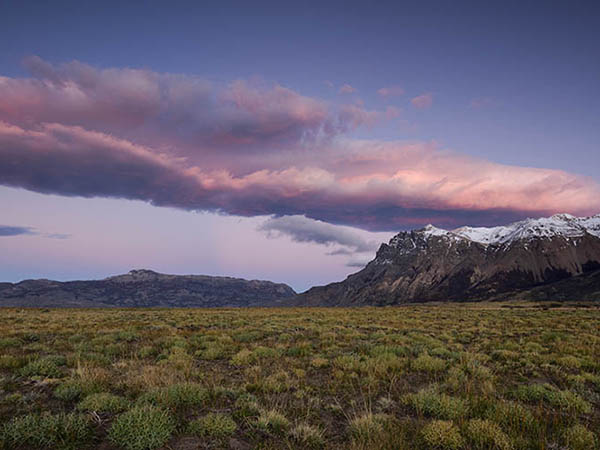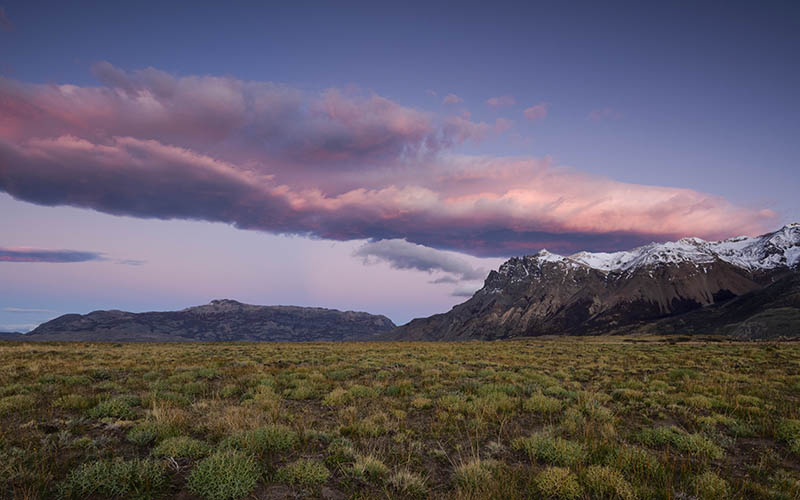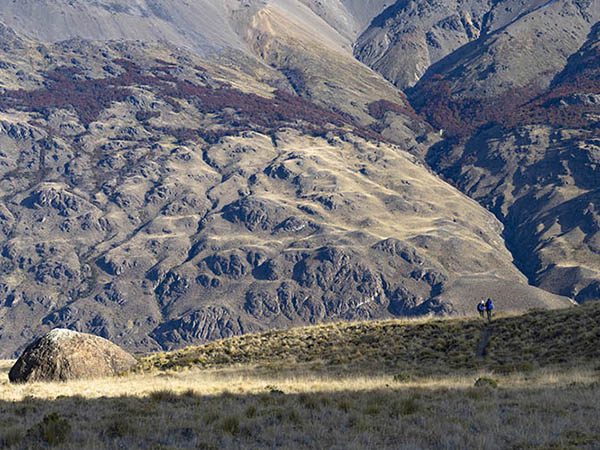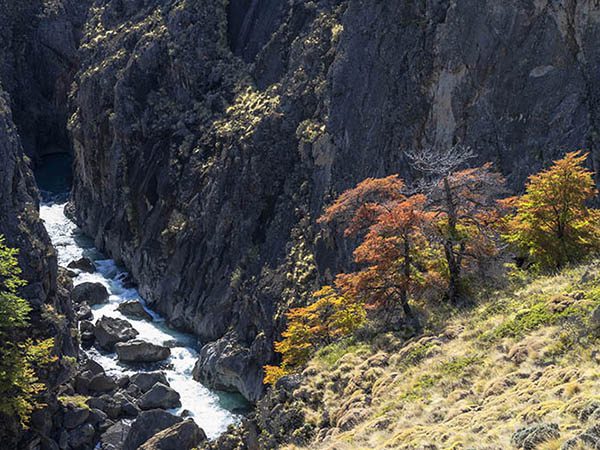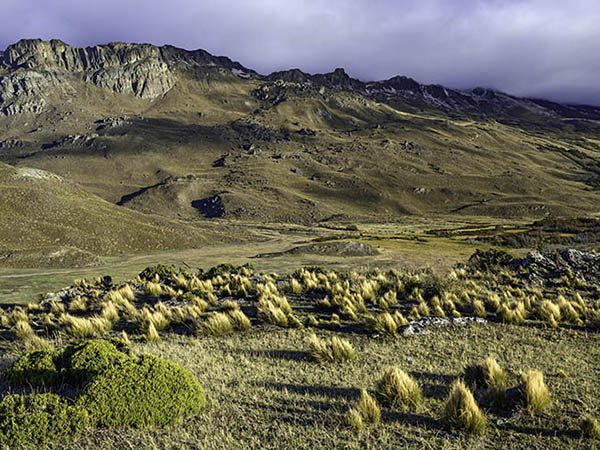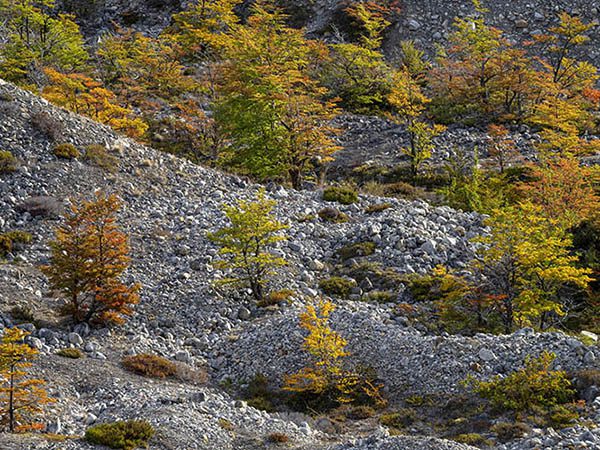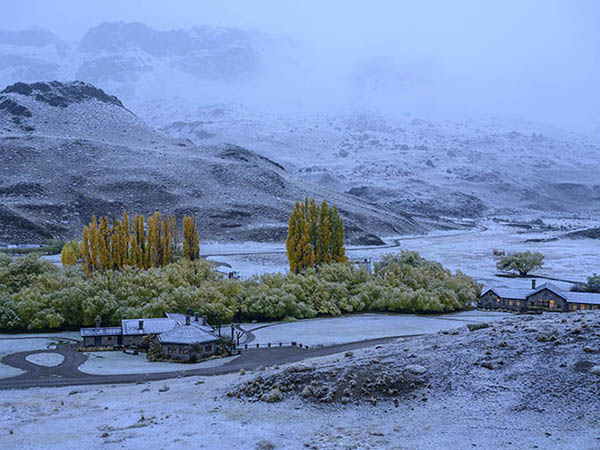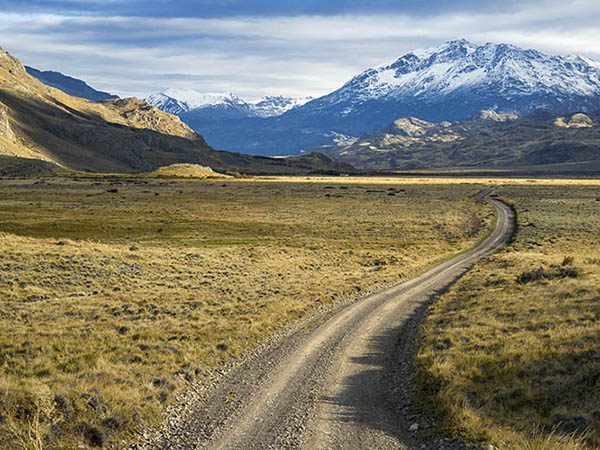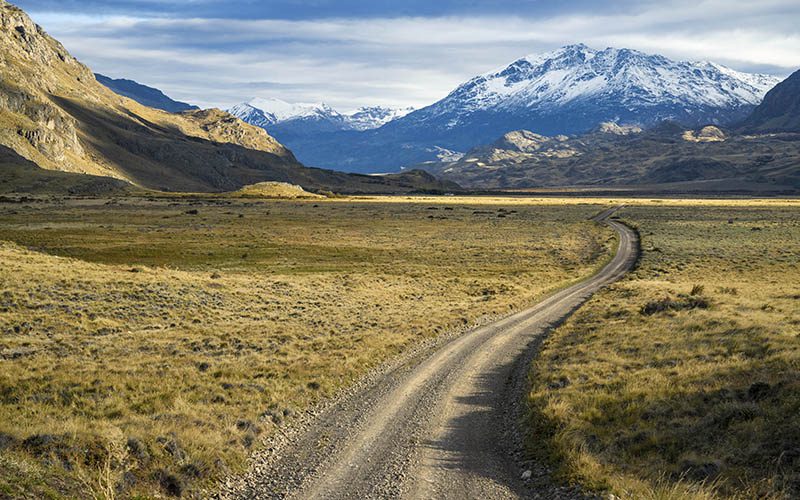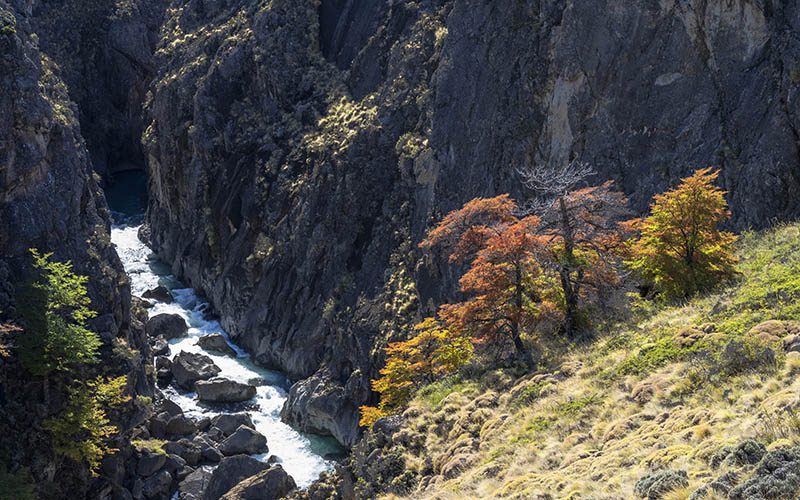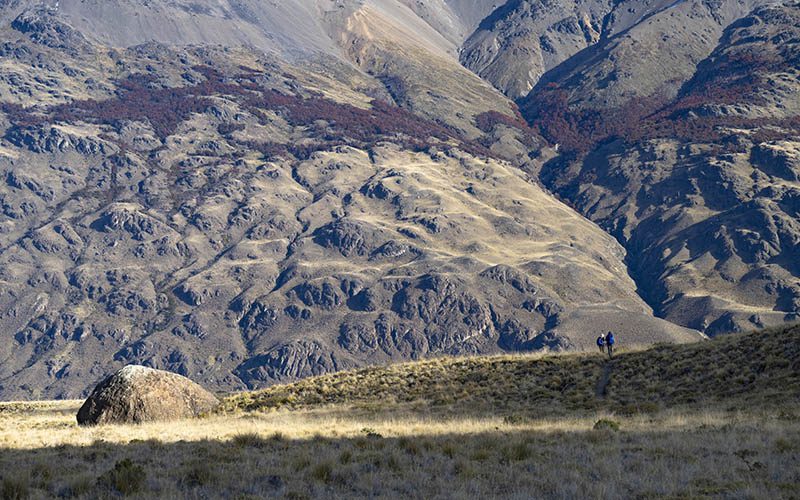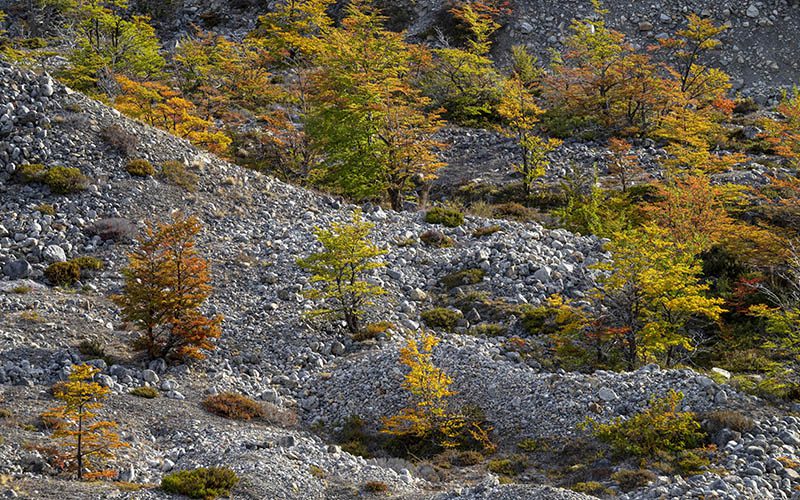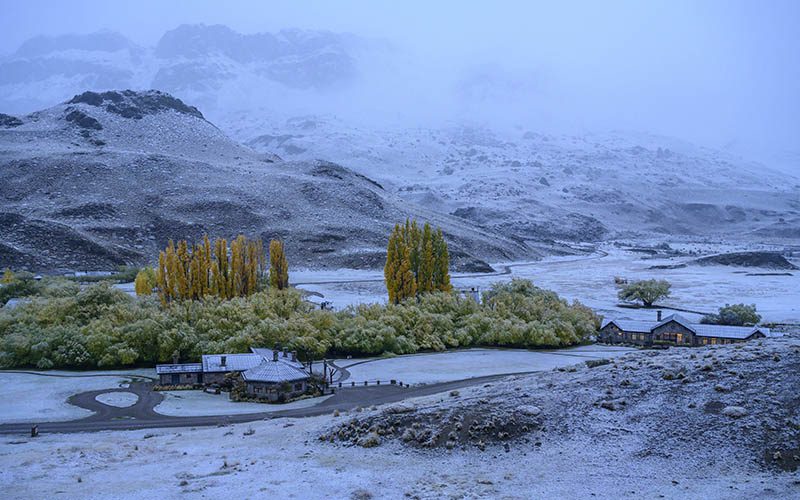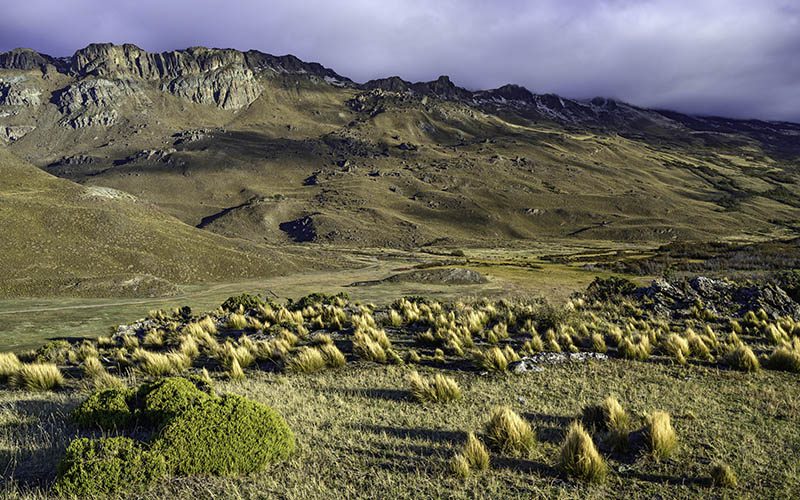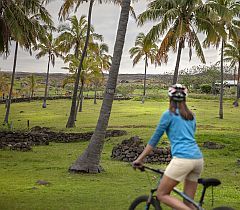The endless story – Autumn in Patagonia National Park
By Guy Wenborne
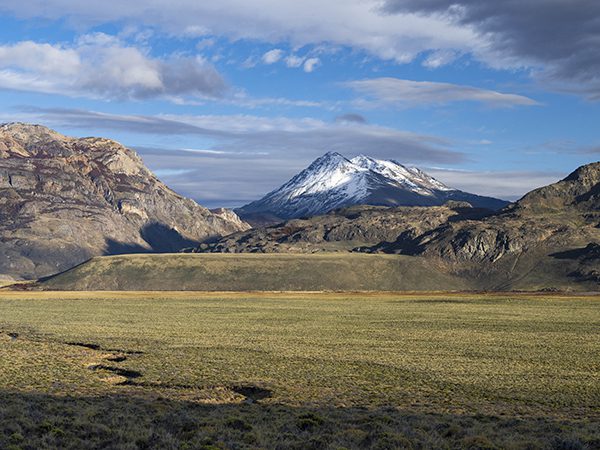
It is the obvious flow of time, a constant vital cycle, marked by the pulse of the seasons, the pulse of life and death in the valley of Patagonia National Park. A story that seems to have already been told, but that is always slightly different upon entering into its depth.
Autumn in the Patagonia National Park is the time of calm, stillness, and contemplation. It is the time to save oneself and rest, to slow down the frenetic pace, after the explosion of life that the previous two seasons represented, before entering the intimacy of winter.
Chromatic evidence is the most beautiful and palpable at this time of year. Observe, remaining still, like a three-dimensional radar, detecting the possible points of view, connecting the landscape views with the close-ups, as well as the subtlest details. This is what keeps me alert and enamored with the light of the landscape. That is where I find myself complete and happy.
In a valley covered in shade due to the lack of sunlight hours, a timid sparkle glides across, a warm light, with just the right measure of brightness to be beautiful and voluptuous enough to remain elegant.
The most obvious and palpable is the color change in the Nothofagus antarctica and Nothofagus pumilo, trees that can attest to the harshness of the climate, in whose contorted arms defeat and survival are recorded.
I identify each of them as unique characters with their own personality: Some happy, others severe, forced, grandiose, half-living or half-dead. Whatever the case, their future is projected in beautiful white skeletons, monuments to their glorious pasts.
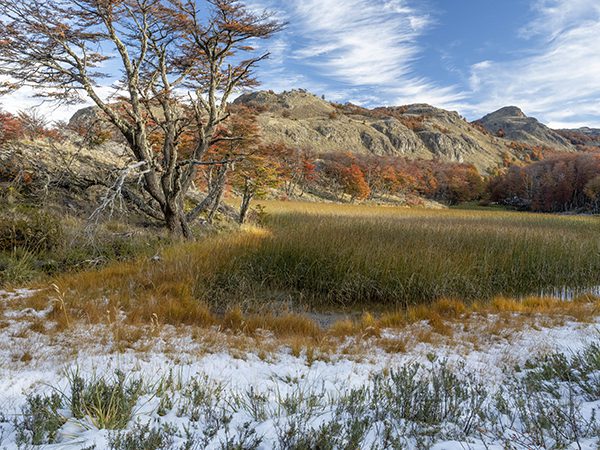
Nostalgic trees that honor the recent summer, burning their foliage and changing their chemical chlorophyll from cold greens to the warm colors of autumn´s fire.
Each of these ‘lengas’ and ‘ñires’ at their own pace and at their turn choose their tones: yellow, orange, salmon, red, purple, ochre, lemon, brown, violet, magenta and infinite shades of silent flames. In the heights are the first, reddish-purple, which loosen their leaves to carpet the ground and integrate themselves into a new layer of plant substrate that intermixes with the trunks from then and plants of now.
The first blankets of snow fall, which melt quickly in the lower part of the valley, but these white layers, which reach the highest mountains, stay on the southern slopes of the colossal hills. They are the first paintings that tint this part of the geography with an absence of color. Cold shocks that accelerate the changes in foliage.
In the undergrowth the snow melts slowly, incorporating itself as moisture into the earth and signaling to the mycelia system that it is time to bloom, spore, awakening the fungi kingdom, a network of networks, below ground. In a few days the mushrooms will appear quickly, alone or in families, all connected and in perfect cycle.
Whether autumn, in Patagonia National Park, is the end or beginning of the cycle does not matter, it’s just a constant cyclical pulse that indispensably happens, it is life at its healthiest and most natural form.
Witnessing this process excites me, energizes me, activates me and fascinates me, to trace the visual, chromatic aspects of this small instant, occurring within a constant cyclical flow of the seasons of the year in a territory that is in the process of creation.
I am grateful to be in this exact moment, witnessing the light that falls upon the scene, to continue an endless story.
Thank you nature
Thank you Tompkins family
Thank you Explora
Guy Wenborne
